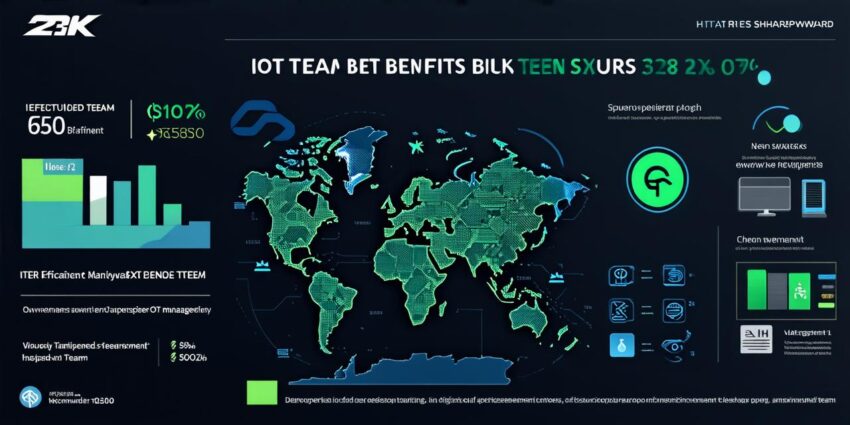What is an IoT Team?
An IoT team is a group of individuals who are responsible for managing and optimizing an organization’s IoT initiatives. This team typically includes experts in fields such as data science, engineering, security, and analytics. The primary goal of the IoT team is to ensure that the organization’s IoT devices are secure, reliable, and providing valuable insights into business operations.
The Benefits of Having an IoT Team
Improved Data Analysis
One of the main benefits of having an IoT team is improved data analysis. IoT devices generate vast amounts of data, but this data is often unstructured and difficult to analyze. An IoT team can help organizations make sense of this data by developing algorithms and machine learning models that extract valuable insights from the data.
Enhanced Security
Another benefit of having an IoT team is enhanced security. IoT devices are often connected to a company’s network, which makes them vulnerable to cyber attacks. An IoT team can help organizations identify and mitigate these risks by implementing security protocols and monitoring for suspicious activity.
Increased Efficiency
An IoT team can also help organizations improve efficiency by automating repetitive tasks and optimizing business processes. For example, an IoT team at a manufacturing company was able to automate inventory management using data from IoT sensors.
Improved Customer Experience
Finally, an IoT team can help organizations improve the customer experience by providing personalized insights and recommendations based on customer behavior. For example, an IoT team at a hotel chain was able to analyze guest behavior using data from IoT sensors in their rooms.
Case Studies: The Real-Life Impact of IoT Teams
Case Study 1: GE Aviation
GE Aviation is a leading provider of jet engine technology and has been using IoT sensors to monitor the performance of their engines for over 20 years. However, as the volume of data generated by these sensors continued to grow, GE realized that they needed an IoT team in place to manage and analyze this data effectively.
Case Study 2: Coca-Cola
Coca-Cola has been using IoT sensors to monitor the performance of its vending machines for over 10 years. However, as the volume of data generated by these sensors continued to grow, Coca-Cola realized that they needed an IoT team in place to manage and analyze this data effectively.

Case Study 3: Walmart
Walmart is a leading retailer and has been using IoT sensors to monitor the performance of its stores for over 5 years. However, as the volume of data generated by these sensors continued to grow, Walmart realized that they needed an IoT team in place to manage and analyze this data effectively.
Conclusion
In conclusion, having a dedicated IoT team is becoming increasingly important for businesses that want to stay competitive in today’s fast-paced digital landscape. By leveraging the expertise of an IoT team, companies can improve data analysis, enhance security, increase efficiency, and improve the customer experience. As we have seen through our case studies, IoT teams have real-life impact on business operations, leading to improved performance, reduced costs, and increased revenue.
FAQs
Here are the answers to some frequently asked questions about IoT teams:
- What are the main responsibilities of an IoT team?
- How can businesses ensure they have the right skills in their IoT team?
- What are the benefits of using an IoT platform for businesses?
The main responsibilities of an IoT team include managing and optimizing an organization’s IoT initiatives, improving data analysis, enhancing security, increasing efficiency, and improving customer experience.
Businesses should ensure that their IoT team has a diverse set of skills, including expertise in fields such as data science, engineering, security, and analytics. They should also consider hiring external consultants or bringing in new talent to fill any gaps in their team’s skill set.
Using an IoT platform can provide businesses with a centralized platform for managing and optimizing their IoT initiatives, including improved data analysis, enhanced security, increased efficiency, and improved customer experience. It also provides scalability and flexibility, allowing businesses to easily add new devices and services as needed.
